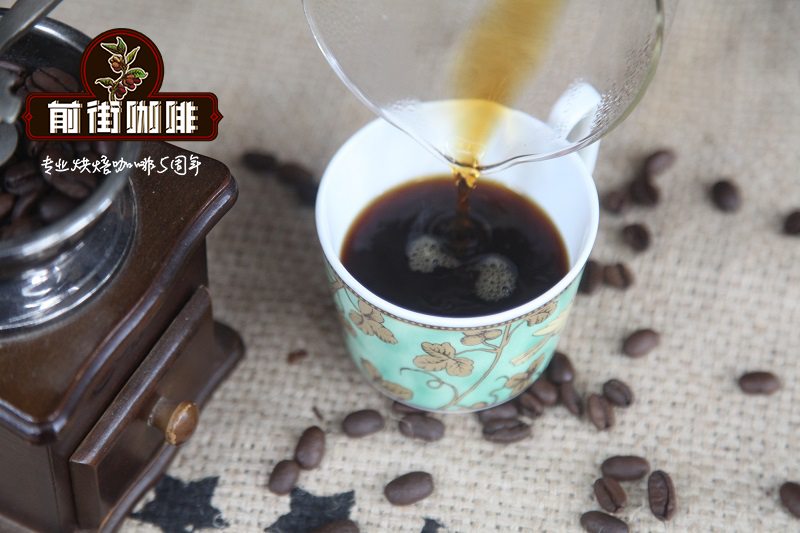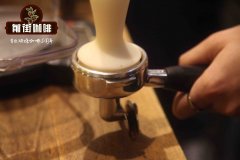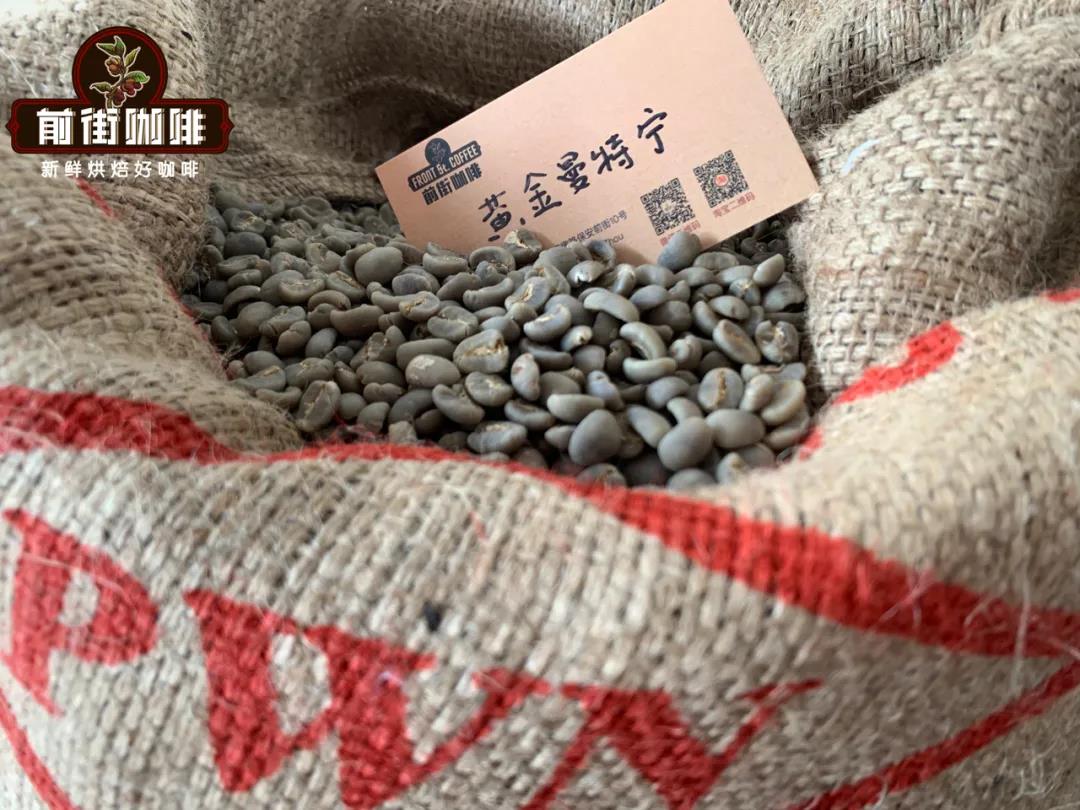Indonesian Mantenin Coffee Bean Flavor _ how to drink Indonesian Coffee beans | is Indonesian coffee beans expensive

Professional coffee knowledge exchange more coffee bean information please follow the coffee workshop (Wechat official account cafe_style)
| 01 | production area description |
Indonesia is an archipelago country, the main producing areas are located in Sumatra, Java and Sulawesi. The northern part of Sumatra is relatively high above sea level. Aceh, where Lake Tawa is located, and North Sumatra, where Lake Toba is located, are the main Arabica coffee producing areas. Lake Tawa is located in the Gayo Mountains in the north of Aceh province in Sumatra, across Indonesia on both sides of the equator, the humid tropical rain forest climate is rich in rainfall, and the fertile volcanic soil brings rich nutrients to coffee; however, due to the remote and inconvenient transportation, it was not until 1924 that coffee was grown, mostly with traditional shade and no pesticides.
Coffee is the second largest cash export crop in Aceh. It is estimated that there are about 60000 small-scale coffee farmers, each owning about 1-2 hectares of coffee planting land. Indonesia's traditional way of coffee trade is multi-point supply, starting from farmers, through multi-layer middlemen, slowly accumulate a large number of export goods. In the Indonesian coffee trading system, the direct trade of receiving goods from farmers and arranging for export through a single window is quite rare in Indonesia.
02 | handling method
Wet planing, also known as wet shelling Wet Hulling, also known as Giling Basah in the local language, is a traditional Indonesian coffee bean treatment. Judging from the name alone, the wet planing method is very similar to the wet treatment (water washing treatment). However, the cup flavor of the two treatments is very different. The coffee treated by the wet planing method is usually mellow and strong, and the personality is very distinct.
Steps of wet planing treatment
① removes peel and pulp and retains parchment and mucous membrane.
② tank fermentation
③ washing off mucous membrane
④ with parchment is sun-dried for 2-3 days to 20-24% moisture content.
⑤ scraped off the parchment
⑥ dries raw beans to 12-13% moisture content.
⑦, prepare for exit.
Why do you use wet planing?
a. Climatic reasons
The tradition of using wet planing in Indonesia starts with the local weather. Humidity in Indonesia is between 70 and 90 percent all year round, typhoons continue, and in some areas, annual rainfall can reach as much as 2000mm. You know, raw beans are most afraid of Rain Water. How did Indonesia overcome such bad weather conditions to produce rich and mellow Mantenin coffee? That is to rely on wet planing.
In tropical climates, coffee takes an average of 2-3 weeks to dry. In such a humid climate in Indonesia, dry coffee has become a big problem. Coffee must take longer to dry, during which time the coffee still maintains a high humidity, making it easier for bacteria to soak into raw coffee beans.
In the process of ordinary washing, the drying process is carried out with parchment to protect raw beans from external damage to a certain extent. However, we can note that the wet planing removes the parchment for the final step of drying, so that the sun shines directly on the surface of the raw beans, causing the coffee beans to dry quickly, 2-3 times faster than washing.
b. economic performance
In the 17th century, Dutch colonists first introduced coffee to Indonesia. This group of colonists sought more and faster economic returns. Wet planing greatly shortened the time spent on the farm and greatly reduced the cost of labor. This coincides with the mentality of investors who pursue quick profits and reduce costs. This is also a reason to promote the wet planing method.
c. Defects and kuku kambing (Bauhinia)
When the parchment is removed by wet planing, the water content of coffee is still as high as 20-24%, while in general treatment, the water content of coffee is reduced to 10-12% before shelling. In the "semi-dry" state, parchment will adhere to the surface of raw beans, removing parchment is more difficult than "fully dry", and the shelling process requires more friction.
But on the other hand, "semi-dry" raw coffee beans are very fragile at this time, far less hard than "fully dry" raw beans, so beans are more likely to be squeezed and form a small gap. This is what we often call horseshoes or sheep's hoof beans (locally known as kuku kambing).
The super speed of wet planing also causes Manning to have higher defects. Employees will be arranged to carry out manual selection of defects in the processing plant, usually with DP (second hand selection) and TP (third hand selection). After three times of hand selection, Mantenin will be better than the second hand selection in the defect rate.
03 | Analysis of raw beans
[Indonesian tiger Mantenin]
The breeds of Indonesian tiger Mantenin are Kaddura, iron pickup and Sidikalong.
Kaddura tastes sour with lemon or citrus taste and is not as sweet as iron pickup and bourbon in terms of sweetness, because Kaddura's sweetness depends on the number and dose of fertilizer applied by growers, and has high production capacity, but continuous fertilization and pruning are necessary to maintain production capacity, so the trees are short and branched. Although production capacity has increased, production is still limited because of the two-year harvest period and the high cost of care.
Iron pickup is the closest variety to the original species. The bean shape is slightly longer, like an elongated egg, known as Arabigo or criollo in Central America. There is a clean citric acid taste, sweet aftertaste, low resistance to leaf rust, making it not easy to take care of, low seed setting, coupled with a long harvest period (harvest every two years), the yield is not much.
04 | Baking analysis
This coffee has a round raw bean body, yellowish green, good evenness and high moisture content. The goal of baking is medium-deep baking, in order to erase too much sour taste and improve its mellow thickness and balance.
In the first batch of baking, the lower bean temperature is relatively high, the bean temperature is 200 degrees, and the firepower is also relatively high. In the baking process, because the elevation of the bean is only medium and the bean quality is very soft, in order to remove the excess gouache and avoid being sour due to lack of dehydration, the baking method of prolonging dehydration time and reducing fire is adopted to adjust the firepower before the bean enters the yellowing point, the dehydration is finished and the first explosion is completed to avoid burns on the bean surface, and choose to come out of the oven 4 minutes after the end of the first explosion and 20 seconds before the second explosion to prolong the caramelization reaction time. Reflect its high quality cleanliness and sweetness.
Roaster Yangjia 600g semi-direct fire
Enter the pot at 200 degrees Celsius, adjust the firepower to 160 degrees after opening the throttle for 30s, keep the throttle unchanged, the temperature return point is 1 "45, keep the firepower, the bean watch turns yellow in 5: 18" seconds, the smell of grass disappears completely, enter the dehydration stage, the firepower is reduced to 140 degrees, and the throttle is adjusted to 4.
7'30 "dehydration completed, firepower reduced to 140 degrees, 8km2 39. 55 "when the bean table appears ugly Hu wrinkles and black markings, the smell of toast obviously changed to the smell of coffee, can be defined as a prelude to an explosion, at this time to listen clearly to the sound of an explosion point, to 9: 00" to start an explosion, adjust the firepower to 110 degrees, the throttle should be fully opened 5 (the firepower should be very careful, not to be so small as to be free of bursting sound), the development of 400s "after an explosion, 203 degrees pot.
This tiger manning is well-balanced and clean, with obvious flavors of cream, dark chocolate and nuts.
05 | Cooking data
Filter cup: KONO
Gouache ratio: 1:14
Degree of grinding: small Fuji 3.5
Water temperature: 86 ℃
Brewing and cooking techniques:
Steam for 30s with 26g water, slowly inject water to 118g for segmentation, and then slightly increase the slow flushing to 210g.
Total duration: 1 million 39 percent 45 "
BG lapping 4Z
Bean grinder
Grinding degree
Powder quantity
Filter cup
BG
4Z
15g
KONO
Water temperature
Stuffy steam
The second stage of water quantity
The third stage of water quantity
Total time 1:45
86 degrees
26g water for 30s
144g
92g
Total amount of water: 210
Sweetness: ☆☆
Acidity: ☆
Bitterness: ☆☆
Other suggestions for trickling extraction:
Normal pressure, recommended grinding degree of 3.5-4, water temperature 86 °C
Indonesian coffee bean brand recommendation
The West Java honey treatment of Indonesian coffee beans roasted in Qianjie coffee is fully guaranteed in terms of brand and quality. And more importantly, the performance-to-price ratio is extremely high, a pack of half a pound 227 grams, the price is only about 118 yuan. According to the calculation of 15 grams of powder per cup of coffee, 15 cups of coffee can be made in a bag, which costs only about 7 yuan per cup, which is recommended by conscience compared to the price sold in cafes for dozens of yuan a cup.
More promotional activities
Please keep an eye on us.
Our Taobao shop: coffee shop in front of the street cafe
Important Notice :
前街咖啡 FrontStreet Coffee has moved to new addredd:
FrontStreet Coffee Address: 315,Donghua East Road,GuangZhou
Tel:020 38364473
- Prev

Three major producing areas of coffee beans in Indonesia _ recommended by Indonesian coffee beans brands | is coffee in Indonesia expensive?
Professional coffee knowledge exchange more coffee bean information Please follow the coffee workshop (Wechat official account cafe_style) Coffee lovers must have drunk Indonesian coffee. The best growing areas of the Indonesian archipelago are in Java, Sumatra and Sulawesi. The three islands have established three major coffee brands, namely Manning Coffee, which is produced in Indonesia.
- Next

What is the recommendation of Indonesian coffee beans? which brand of Indonesian Manning coffee is better? the characteristic story of Indonesian coffee
Professional coffee knowledge exchange more coffee bean information Please follow the coffee workshop (Wechat official account cafe_style) people who like coffee must have drunk Indonesian coffee beans. The best growing areas in the whole Indonesian archipelago are Java, Sumatra and Sulaw.
Related
- Does Rose Summer choose Blue, Green or Red? Detailed explanation of Rose Summer Coffee plots and Classification in Panamanian Jade Manor
- What is the difference between the origin, producing area, processing plant, cooperative and manor of coffee beans?
- How fine does the espresso powder fit? how to grind the espresso?
- Sca coffee roasting degree color card coffee roasting degree 8 roasting color values what do you mean?
- The practice of lattes: how to make lattes at home
- Introduction to Indonesian Fine Coffee beans-- Java Coffee producing area of Indonesian Arabica Coffee
- How much will the flavor of light and medium roasted rose summer be expressed? What baking level is rose summer suitable for?
- Introduction to the characteristics of washing, sun-drying or wet-planing coffee commonly used in Mantenin, Indonesia
- Price characteristics of Arabica Coffee Bean Starbucks introduction to Manning Coffee Bean Taste producing area Variety Manor
- What is the authentic Yega flavor? What are the flavor characteristics of the really excellent Yejasuffi coffee beans?

